The Lead
In the 1950s, under the direction of Nikita Khrushchev, Soviet workers undertook one of the largest housing construction projects in history. Across the 15 Soviet Republics and the Eastern European soviet satellite states, five-story apartment buildings were built en masse. Made of paneled concrete or brick, these squat apartment blocks became emblematic of the Soviet Union — their ubiquity conveying both the regime’s heavy-handedness and utilitarian goal of providing universal housing for all. They became known as “Khrushchyovkas.”1
The Khrushchyovka largely solved the mid-century housing crisis in the USSR with a top-down approach. From Yerevan to Vladivostok and from Dushanbe to Tallinn, engineers built basically the same structure. They were a stop-gap solution meant to last only 25-30 years, but many still stand today. Kitchens and bathrooms are small. The ceiling is only about eight and a half feet tall, and the walls are thin. The staircase is made of cold concrete, and the hallway is usually two-toned — one color painted from the floor to about the five-foot mark, then solid white paint up to the ceiling. There’s never an elevator. So, it’s not uncommon to see a babushka slowly trudging up the gray steps to her fifth-floor apartment. The outside entrance doors are heavy and have a punch-in code (I’ve also heard rumors that the buildings all use the same code but have yet to test the theory). Heating in a Khrushchyovka is controlled by the city. So, there are always a couple weeks in the fall when you wish you’d have heat but the city-wide “turn-on” date hasn’t come yet. Paradoxically, once the heat is on, it’s boiling. So even on the coldest winter days, you might see people with their windows open. Sometimes a Khrushchyovka has a balcony. Sometimes they were built in groups surrounding a central playground or work-out area. The luckiest few have a Soviet mural painted on the side.
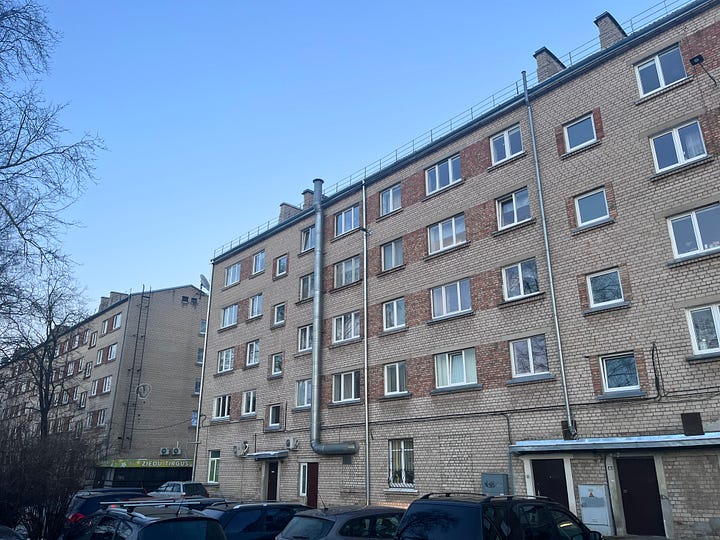
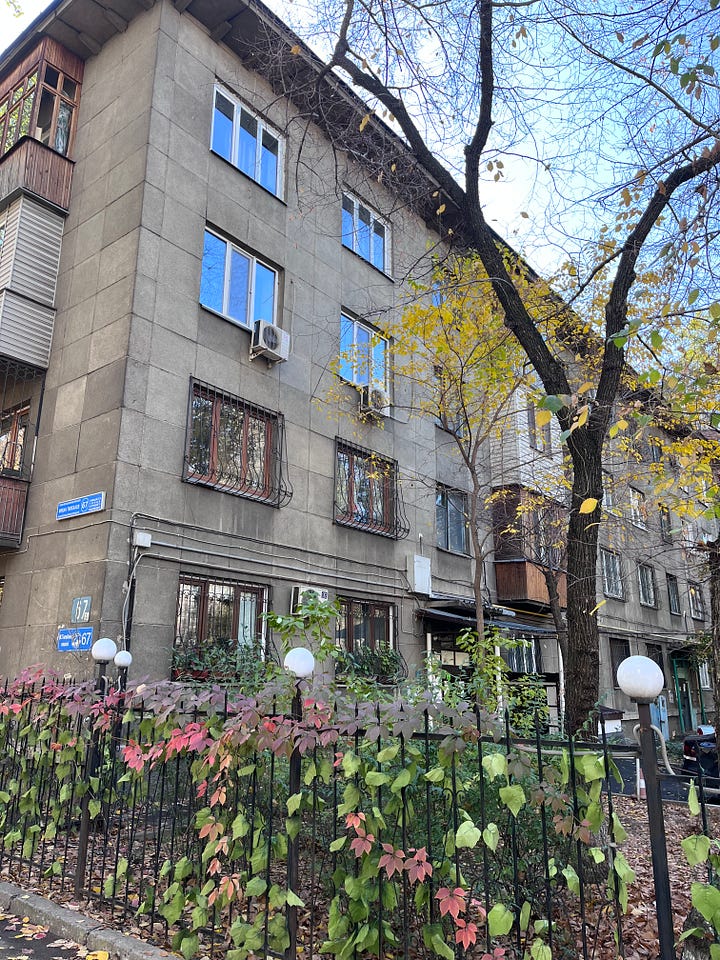
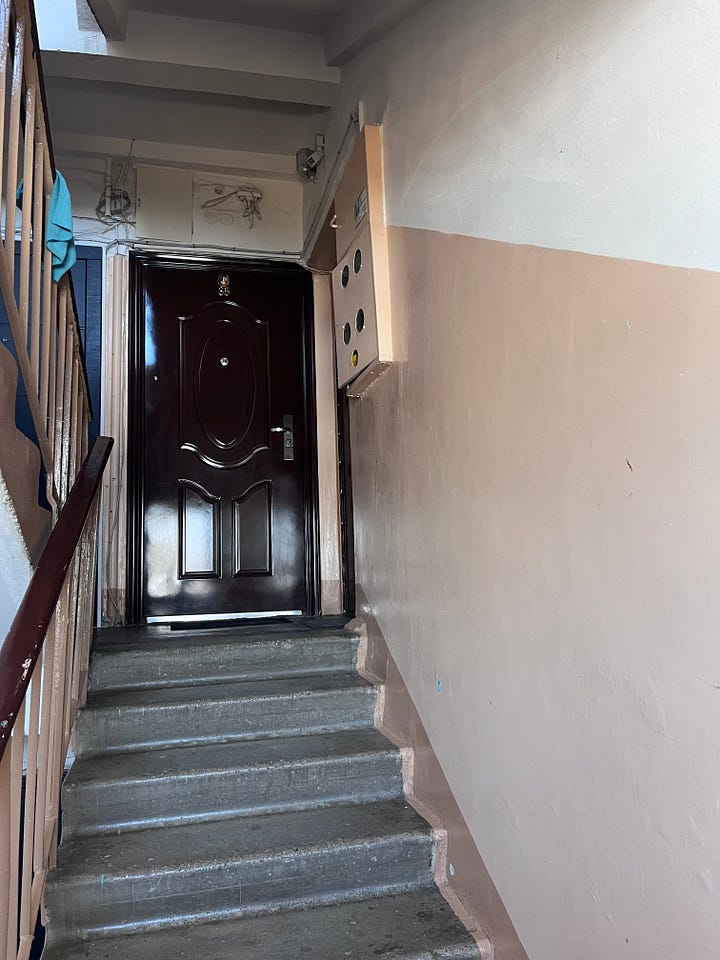
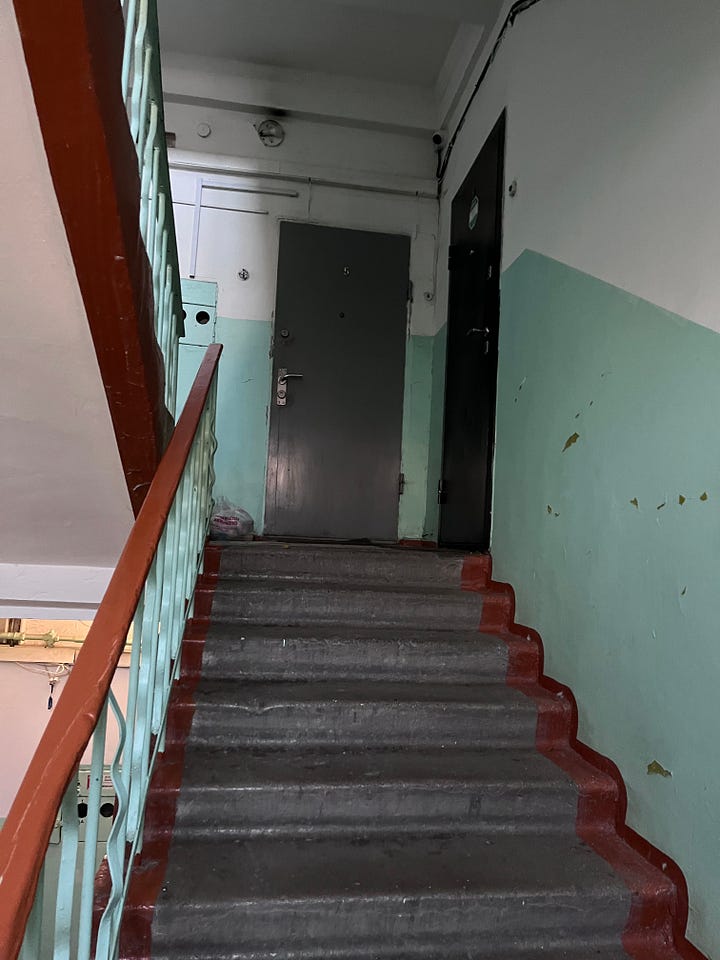
These buildings became a central part of the Soviet experience and are burned into the memory of anyone who has spent time in a post-Soviet country today. According to some sources, as many as 50 percent of Latvian residents live in Communist-built housing. In other post-Soviet countries, such as Estonia, that number may be as high as 70 percent.
Imagine everyone having the same memory of grandma’s house. Now imagine that not only grandma but also your uncles, aunts, cousins, and maybe even you also lived in basically the same apartment. The characteristics of the Khrushchyovka are so universal in the post-Soviet world that a Russian artist and video game programmer teamed up to design two games — the first called “It's Winter” and the second called “It’s Summer” — where there’s no real objective besides pitter-pattering around the Khrushchyovka. In the games, you can make eggs or take out the trash or walk around the block. But the point is simulating boring, ordinary life in a Khrushchyovka and, by doing so, provoking collective nostalgia.
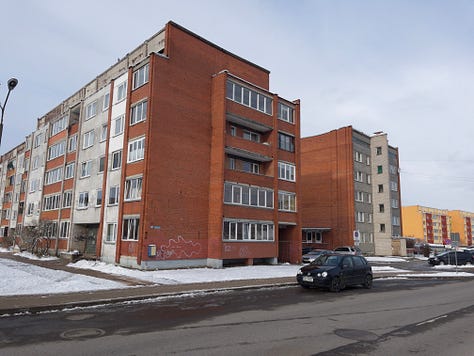
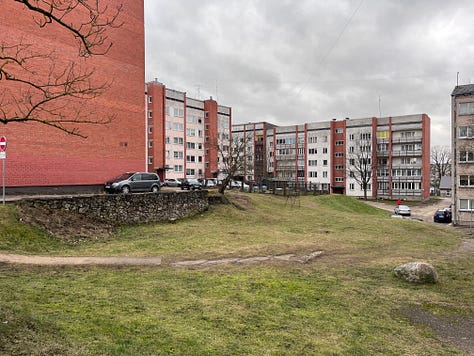

I’m currently living in my second Khrushchyovka, and over the past few weeks, I have been thinking about a Khrushchyovka-based theory of development in the post-Soviet world. Though they were all built to look the same in the 50s and 60s, the Khrushchyovka and its role in the built environment has changed as the post-Communist countries have splintered ideologically and economically. In Latvian villages out where I live along the Russian border, the Khrushchyovkas’ exteriors seem mostly untouched from Soviet times, but they stick out among neighborhoods otherwise dominated by wooden single-family homes still heated by firewood. In Rēzekne, the presence of the Khrushchyovka shows where the Soviets expanded the city. In the old town center along the river, it’s all small homes, old and new. On the other side of the train tracks, it’s block after block of Khrushchyovkas.
But more developed post-Soviet countries are taking different approaches. In 2017, in Moscow, which was once the epicenter of the Khrushchyovka-building craze, the Putin-backed mayor announced that nearly 8,000 Khrushchyovkas, the homes of about 1.6 million people, would be demolished. In Tallinn, Estonian engineers have renovated, repainted, and completely remodeled whole neighborhoods of Khrushchyovkas to transform them into energy-efficient, high-end housing.
The mass construction of Khrushchyovkas was a big idea that met a big need. The Soviets said screw local aesthetics, screw single-family homes, screw neighborhoods, screw open fields. They built. That’s not to excuse the evils of that regime. But, there’s something appealing about that mentality, especially coming from the U.S. where it seems like NIMBY-ism, zoning, and bureaucracy are such big impediments to building affordable housing. In a recent interview with Ezra Klein, U.S. Representative Jake Auchincloss said Americans need to completely rethink housing. He brought up modular construction and the idea conceptualizing a house as a commodity instead of an investment. But he also said that people (Democrats especially) need to think bigger. He mentioned two decommissioned military bases in Massachusetts and then made a proposal: “Why don’t we have the big idea of the governor in the statehouse, either in Massachusetts or in California or another blue state, starting a new city and saying: We’re actually going to build 200,000 units of housing here. We’re going to ban cars and develop it so it’s more organic and walkable.” Other countries have built or are building cities from nothing. Why does that seem impossible in the U.S.?
My hyper-fixation on these buildings may come from how much time I spend walking, which I also think is an underrated part of the “abroad” experience. When you don’t know a place well, don’t own a car, and aren’t familiar with the public transport schedules, you walk. One of my best friends, an international student who shall not be outed in this post, arrived on campus in Madison, heard that Target was the place to buy supplies for his dorm, and then proceeded to walk five-and-a-half miles to and from the Target in Hilldale.
In Latvia, I’m making similar treks. I’ve been swimming in the pool at the Latvian State Border Guard College. Usually, I can catch a city marshrutka for 50 cents on the way there. But they run super irregularly, so I walk forty minutes back to my apartment. Along the way I mentally catalogue how the city’s architecture changes. I make a similar 30-minute trek across the train tracks to volleyball four times per week, and I also walk 25 minutes in a third direction to the gym. The result is tired legs, but my tech overlord says my step counts are usually on point.
My longest treks are when I’m doing reporting on the border (more to come on this soon). I walk 15 minutes to the Rēzekne bus station before the 7:55 a.m. bus to Terehova departs. It’s the only bus on that route, so once I’m dropped off literally at the Russian border, I’m left to my own devices to figure out a way home. After talking to some truckers and restaurant/cafe workers in my semi-broken Russian, I walk for about an hour and forty minutes along the highway to Zilupe, the nearest town, which has a train station. People in cars rushing along the country roads sometimes give me a sideways stare, but for the most part, I’m happy. These days are productive and make me feel like there’s a reason why I’m here. On the outside of town, there are small houses painted in unsettlingly vibrant colors. But as I walk into the center, there they are again, reminding me of my warm apartment just a train ride away where I’ll drink some tea and go back to bed. I am once again among the Khrushchyovkas.
In the News/Media:
The Wall Street Journal posted a video explainer about the severing of undersea cables in the Baltic Sea. This has been a big story in the Baltics and other Nordic countries in the past few months, but I’m not sure it’s gotten much if any coverage at home. Basically, ships that are controlled by Russians, even though they sail under another country’s flag, have been dragging their anchors across the bottom of the Baltic Sea, cutting through important undersea cables that transmit data between countries in northern Europe. It’s the type of hybrid warfare I think we’re going to have to become accustomed to during this geopolitical realignment. No one has been killed, and the perpetrators have deniability. Yet the message is clear: the infrastructure systems supporting our modern, technology-driven lifestyle are more vulnerable than you think.
HBO quietly premiered a new show in the last few weeks called “The Eastern Gate.” A “lean and mean” spy drama, according to the all-knowing New York Times, the show is about Polish spies in Kaliningrad and Belarus spying on Russians and trying to prevent war from breaking out between the Russian-bloc and NATO. One of the main spy chiefs in the show, which is set in 2021, says that if the Russians were to attack somewhere, it would be in the Baltics, Poland, or Ukraine. We all know which one Putin ended up choosing….
One underrated moment from Trump’s explosive press conference last week with Volodymyr Zelenskyy was when a Polish reporter asked Trump if he would defend Poland. Trump said that he would because the Polish people are “one of the finest groups of people [he’s] ever known” even though “Poland’s in a tough neighborhood.” Then, the reporter asked about the Baltics, and Trump sort of grimaced and then said, “it’s a tough neighborhood too … but we’re committed.”
Below: A Latvian magazine on a newsstand in Riga. The headline translates to “Trump’s ‘Peace’” with the caption “Putin rejoices. Europe is in shock. Ukraine still does not give up!” Latvia has recently pledged to increase its military budget to about four percent of its GDP next year and five percent in subsequent years, according to LSM. As recently as 2014, Latvia was spending less than one percent of its GDP on its military. While in a taxi in Riga a few weeks ago with some friends visiting from Italy, we struck up a conversation with the driver. He asked us about Trump, and we all grumbled. “You have a new president, and so do we,” he said.
Personals
We finally got snow after weeks of hovering just above freezing. It felt like I was seeing Latvia for what it should be — frigid, frosted, and white everywhere. Of course, being from Wisconsin, I know what it’s like to live in a snowy climate. But when the snow fell in Latvia, it stuck wrapped and frozen around the limbs of the trees in a way I’d never seen before. Maybe it’s because I’m much farther north than Wisconsin. With a latitude of about 56.5 degrees, I’m in line with southern Alaska, somewhere between Ketchikan and Juneau. Coincidentally, that’s where my grandpa was born.
As I mentioned earlier in this post, I’ve been swimming recently. The pool is a funny place — it emphasizes both the total solitude and unexpected intimacy of living abroad, especially outside of a major city. In the pool, it’s just me. I don’t think about much else besides keeping my head down, counting my strokes, the shape of my arms and legs pushing through the water. Every pool in Latvia also has a sauna, which is the perfect way to end a swim. But before I get in the pool, I have to check in and pay. I tried to pay in Russian, but I got the craziest looks when I went up to them and said, “Hello, I want to swim for one hour” (though I’m not sure why — what else was I supposed to say?). Because of my broken Russian and strange name, the lady at the desk remembers me. She had me write down my first and last name on a post-it note, which she keeps stuck to her computer. That is the strange intimacy of being abroad — even when I want to blend in, I can’t. When I go places in this small city — the kebab restaurant, the library, the gym — people remember me because of my foreignness. Right now, at this moment, I know my name is there, taped to the pool lady’s monitor. After I leave Rēzekne, I wonder how many weeks or months will pass before she’ll take it down.
Thanks for reading! I said these would be more often. And so far, I’ve failed! But I have other posts and some real journalism pieces on the way. Please write with errors, typos, spell checking concerns, or anything else.
A note on terminology. I use “Khrushchyovka” and “Khrushchyovkas” in this post. But really I’m mostly talking more generally about paneled, Communist-built housing, which could also include other forms. Some Khrushchyovkas had four floors, for example. And during the 1970s, the “Brezhnevka” was a larger version of Soviet paneled housing favored under (you guessed it) Leonid Brezhnev. Also, this is a strange case where we’re transliterating Russian but using English plural forms. Khrushchyovka (хрущёвка) should really be Khruschyovki (Хрущевки) as the Russians don’t add “s” but add “i” to words to make them plural.




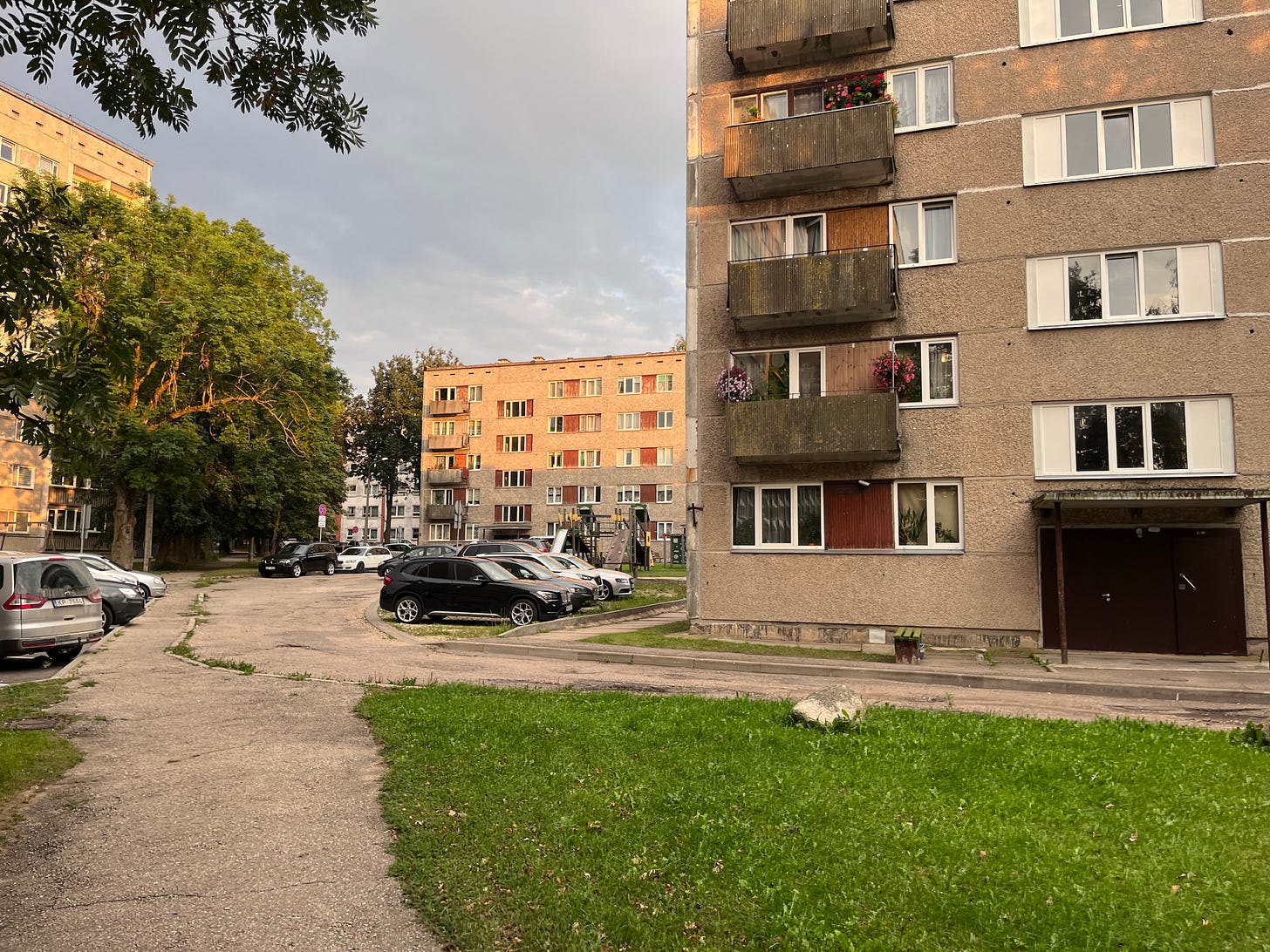
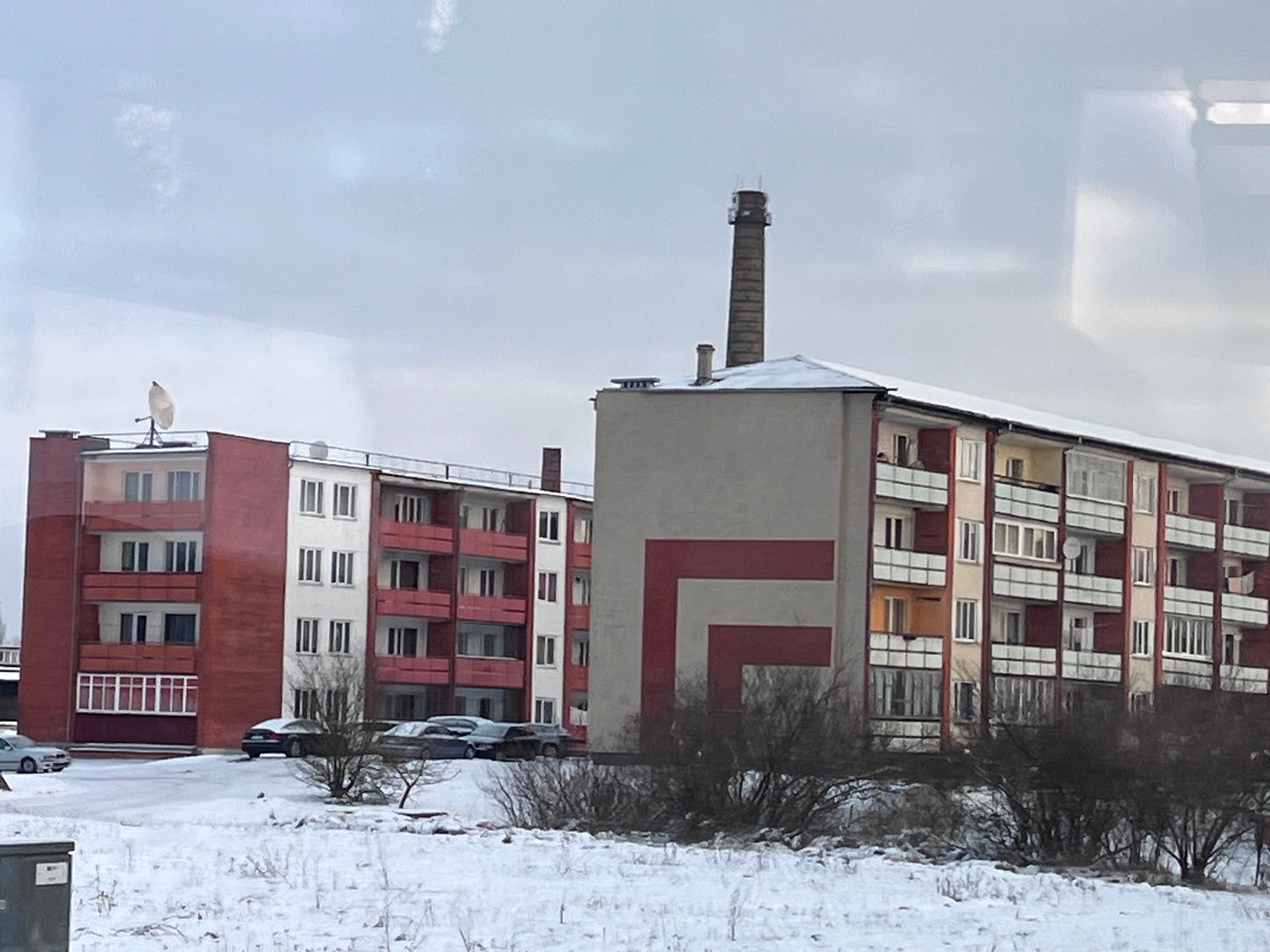
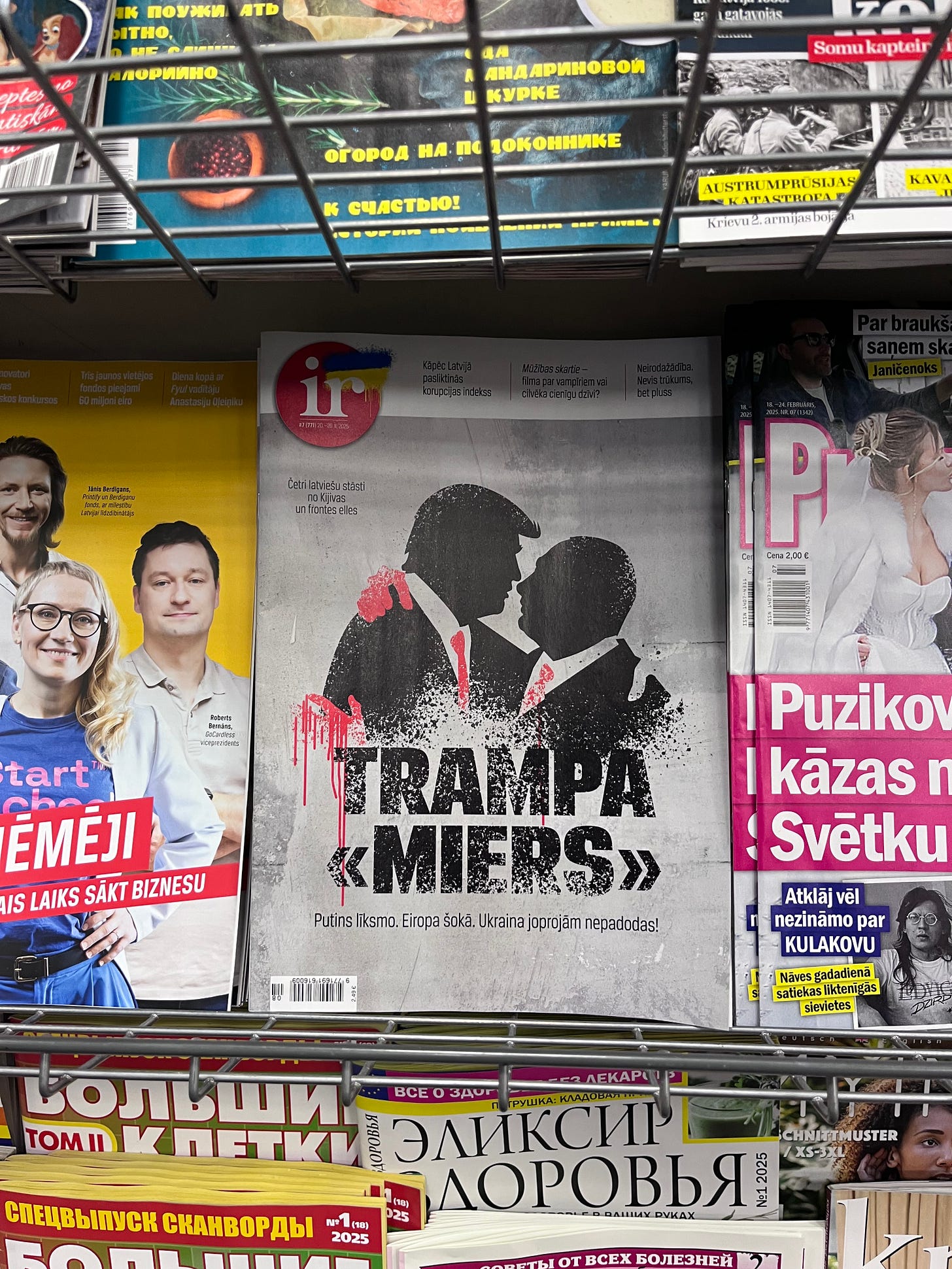

Great post! Loved reading it. Super interesting!
Nice post, as usual :) I almost miss my Kazakh apartment now...except you know who...